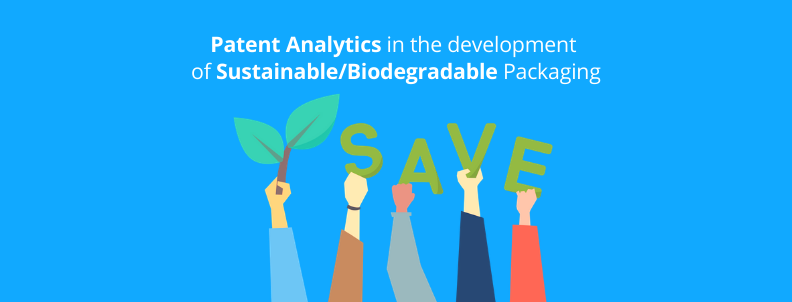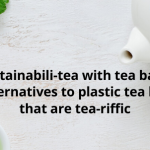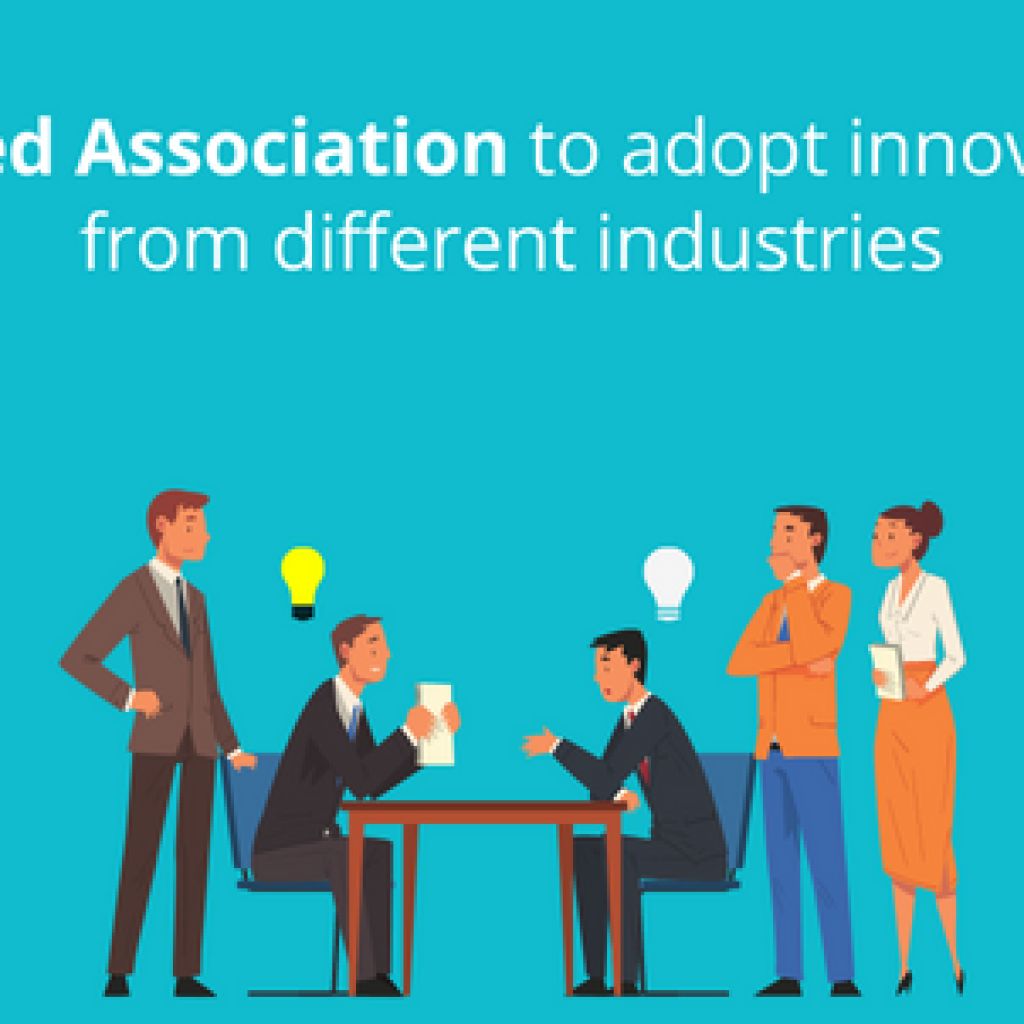A study conducted by NYU Stern’s Center for Sustainable Business revealed that in over 90% of the individual product categories, the sustainability-marketed products outperformed their conventional counterparts. So much so that people even prefer their cups of coffee to be sustainable and their tea bags to be plastic-free. And people are not just preferring sustainable products over their non-sustainable counterparts, but are also willing to pay higher prices for them.
It goes on to show that – fortunately for our environment – people are growing increasingly conscious of what they’re buying and how it’ll affect the planet. Combined with the government’s environmental laws, companies are expected to opt for environmentally viable solutions.
But it’s easier said than done. Let’s take the most used packaging material for instance. Yes, it is plastic!
Plastic has undefeatedly dominated the packaging industry for decades. Now when it comes to picking an eco-friendly material for packaging, there is no objective answer as every industry and product requires different kinds of materials.
For instance, the beverage packaging industry’s biggest issue would be insoluble leakage-proof material. They can’t have the packaging material dissolve with their product or for the product to leak out of the container. Similarly, if you look at the tea packaging industry, they need their tea bags to retain flavor more than anything and just any material wouldn’t cut.
Switching from plastic to biodegradable material isn’t easy. The versatility that plastic brought with it is one of the main reasons why it leaves the packaging industry with big shoes to fill. The low number of sustainable options is another factor. Each product requires its own biodegradable solution customized to fit its needs.
With the preferences and requirements set, a breakthrough is the need of the hour. Industries and researchers have already started to find customized sustainable solutions, adopting ideas from various industries and then adding specific solutions for their respective problems. Intrigued?
In the table below, we have provided a list of patents pertaining to advancements in biodegradable solutions that showcase the industry’s take on sustainability.
| Publication Number | Level II (Material Composition Overview) | Detailed Material/Process Description (From relevant patent text) | Is it cellulose based? | Patent Owner |
|---|---|---|---|---|
| US10125249B2 | PLA + Polystyrene | The present invention includes blends of styrenic polymers with optional polar additives and a biodegradable component. In an embodiment, the present invention includes blends of polystyrenic homopolymers and/or copolymers and polar additives to enhance the miscibility of biodegradable components. | No | Fina Inc. |
| US9796842B2 | PLA + Polystyrene + epoxy-functionalized (meth)acrylic | The present invention includes blends of styrenic polymers and biodegradable polymers. In an embodiment, the present invention includes a blend of homopolymers and/or copolymers of polystyrene and poly(lactic acid), or PLA, based homopolymers and/or copolymers. | No | Fina Inc. |
| US9328239B2 | PLA + PHA + PHB | Described herein are compositions of polylactic acids (PLAs) and polyhydroxyalkanoates (PHAs), where the PHA component is a multiphase copolymer blend of PHA, wherein one phase of the PHA copolymer blend is an amorphous rubber phase, with a Tg between −40° C. and −15° C. and, and is between 5-45% of the total PHA in the composition. | No | Cj Cheil Jedang Corp |
| US7972669B2 | PLA + Wax | The biodegradable resin foam sheet of the present invention is produced by foaming a biodegradable resin composition containing a biodegradable resin, and a wax and/or a polyolefin resin. The biodegradable resin preferably contains a biodegradable aliphatic polyester in the main chain thereof as a main component, and specifically contains this component in a content of preferably 70% by mass or more, and more preferably 85% by mass or more. | No | Unitika Ltd. |
| WO2019043134A1 | Maltodextrin, Polycaprolactone (PCL) , PBAT | The present invention relates to novel plastic articles, with improved homogenous dispersion of the biological entities, particularly enzymes and methods for producing them. The invention shows that such articles, with suitable distribution rate of active biological entities, are of particular interest to answer the physical and degradation characteristics expected for single-use and short-lived plastic articles. | No | Carbiolice |
| KR2015070117A | PLA + Phosphoric Acid | L- as poly-lactic acid component and poly -D- polylactic acid composition comprising a polylactic acid component to with respect to 100 parts by weight of the polylactic acid resin compositioncontaining 0.005 parts by weight of ~1.2 parts by weight of a phosphoric acid metal salt represented by formula (1), | No | Toray Industries Inc. |
| KR2012087621A | PLA + Tourmaline + Zeolite | Polylactic acid (poly lactic acid) 100 parts by weight; ? Tourmaline 710 parts by weight; ? 35 parts by weight of the zeolite; Ocher 3? 5 parts by weight of far-infrared rays are emitted anionic phosphate monazite mineral 5? 10 parts by weight are contained for generating the phosphate monazite mineral is made of (Ce, La, Y, Th) PO 4, the composition components peulreu climb ( F) 4.7% by weight, the content of, the content of MgO 0.62 wt%, 0.72 wt.% content of Al 2 O 3, the content of SiO 2 5.2% by weight, 2.3% by weight of the content of P 2 O 5, S0 3 content of 4.4% by weight , the content of 1.1% by weight of Cl, K 2 O content of 0.074% by weight, 1.8% by weight, the content of CaO, the content of Kr 0.019% by weight, 1.2% by weight, the content of SrO, 4.5% by weight, the content of BaO, La 2 O 3 of content of 23% by weight and 34% by weight, the content of CeO 2, 3.3% by weight, the content of Pr 6 O 11, 8.1% by weight of the content of Nd 2 O 3, 0.76% by weight, the content of Sm 2 O 3, 0.16 wt.% content of ThO 2 and Y 2 O 3 content of 4.047% by weight been made to a mean particle size of 1 to 100㎛ the far-infrared radiation and anion to Environment-friendly biodegradable nanocomposite resin composition for well-being, characterized in that the container for the mineral monazite phosphates. | No | Dongyang P&S Co Ltd |
| CN108456407A | PLA + Polypropylene resin + poly-3-polyhydroxybutyrate + Plant Fibers + Cellulose Acetate | The present embodiment is related to a kind of degradable package material, includes the raw material of following parts by weight:13 parts of acrylic resin, polylactic acid 20 parts, 7 parts of Biodegradable polyester, 9 parts of plant fiber, 10 parts of poly 3-hydroxy butyrate, 5 parts of modified starch, cellulose acetate 8 Part, 3 parts of talcum powder, 4 parts attapulgite modified, 1 part of lubricant, 2 parts of plasticizer, 0.05 part of fabric softening. | Yes | Hefei Dahu Wire & Cable Technology Co Lt |
| CN108359229A | PLA | The present invention relates to field of compound material, and in particular to a kind of enhanced polylactic acid acidic group composite material and its preparation side Method. | No | University Of Strathclyde |
| CN107151424A | PLA + PBS/PBSA/PBT/PCL/PGA | The present invention relates to field of material technology, and in particular to a kind of polylactic acid membrane material and products thereof. | No | Handa Precision Electronics Kun Shan Co |
| CN106987105A | PLA + thymol tributyl citrate | A degradable antibacterial food packaging material comprising a base material of polylactic acid and auxiliary agent thymol and citric acid Tributyl is prepared from using the tape casting technique, wherein:Thymol consumption is 5%-10%, the citric acid three of PLA weight Butyl ester consumption is the 3%-7% of PLA weight. | No | Zhejiang Agric Sci Acad |
| CN106751625A | poly (3-hydroxybutyrate -co-4- hydroxy butyrate)+ hydrophobic nanosilica + PLA | A biodegradable barrier plastic article wherein a raw material prepared from the following percentages by weight calculated from: 55~80% polylactic acid; poly (3-hydroxybutyrate -co-4- hydroxy butyrate) 15~30%; polyhydroxyalkanoates containing long chain 2 to 5%; grape pomace extract 1% to 6%; hydrophobic nanosilica 2 to 6%; the polylactic acid comprising 1〇 weight average molecular weight to 300,000 molecular weight polylactic acid and the weight average molecular weight of the low molecular weight polylactic acid of 0.5 to 20,000, wherein the low molecular weight polylactic acid accounts for 9~20% of the total mass of polylactic acid; containing the polyhydroxyalkanoate is a copolymer of a long chain having 6 to 12 carbon atoms, a hydroxyl group-containing fatty acid ester structural units. | No | Jiangsu Southern Packing Co Ltd | Sun Yat-Sen University (China) |
| CN106221160A | PLA + Chitin | A method for preparing an ingot antibacterial chitin crystal bar base polylactic acid compound packaging material, wherein: (1) a certain amount of chitin is added in a certain amount of hydrochloric acid solution, and at 45-55 ͒C, stirred 2-3hrs, then filtered, the filtrate was retained, washed repeatedly and then the filtrate was centrifuged, the supernatant removed, the precipitate retained after precipitation of the homogenization treatment, the resulting product in an ultrasonic dispersion under ice-cooling, dialyzed against water to neutral, and finally the product was lyophilized to give the ingot chitin; (2), said certain amount of chitin in the ingot was dissolved in acetic acid, formulated at a concentration of 30-40g / L of an ingot chitin was then added surfactant Tween 80; weighed amount of the polylactic acid dissolved in chloroform, formulated at a concentration of 40-50g / L polylactic acid solution; in a stirred, polylactic acid solution was added dropwise to the ingot chitin solution, and stirred at 20-25 ͒C mixed; the mixture is transferred to a homogenizer, is emulsified, and then poured into a Teflon mold, placed in liquid nitrogen to cool the environment, molding, freeze-dried to remove CHC1 3; obtained composite material with excess Repeated alcohol dip, and finally, the product is freeze-dried to obtain an ingot chitin-based composite packing material of polylactic acid. | No | South China University Of Technology |
| KR1183260B1 | PLA + Silicate | It contains a polylactic acid biodegradable polyester resin 100 parts by weight parts of layered silicate and 0.1 to 10 parts by mass at least 50% by weight. And a crystallinity of 15% or more as measured by X-ray diffraction method, and a 20 ℃, the oxygen permeability coefficient at a relative humidity of 90% 50ml · mm / m 2 · day · MPa or less. T | No | Unitika Ltd. | Shiseido Co. Ltd. |
| KR1376642B1 | Polyethylene+ Paraffin Wax + PLA | A biodegradable resin and, as a foam formed by a biodegradable resin foam sheet formed of a biodegradable resin composition containing a wax or a polyolefin resin, The biodegradable resin is less than 70% by weight is composed of poly (lactic acid), the wax is candelilla wax or paraffin wax, and the polyolefin resin are polyethylene, | No | Unitika Ltd. |
| JP05264176B2 | PLA + Wax | The content of polylactic acid in the biodegradable resin is 70 mass% or more, The content of the wax of the biodegradable resin composition is 0.2 to 10 wt%, | No | Unitika Ltd. |
| CN106751625B | PLA + PHB + PHA | a kind of biodegradable high-barrier shape material comprising, 55 to 80% of polylactic acid; poly (3-hydroxybutyrate -co-4- hydroxybutyrate) 15% to 30%; containing long-chain the polyhydroxyalkanoate 2 to 5%; grape pomace extract 1% to 6%; hydrophobic nanosilica 2 to 6%. The present invention employs poly (3-hydroxybutyrate -co-4- hydroxybutyrate) toughened polylactic acid, low molecular weight polylactic acid added simultaneously to increase the molecular weight of polylactic acid and poly (3-hydroxybutyrate -co 4-hydroxybutyrate) and the thermal stability and processability of polyhydroxyalkanoate are improved using grape fruit residue extract. | No | Jiangsu Southern Packing Co Ltd | Sun Yat-Sen University (China) |
| CN103540111A | PLA + PBAT + polypropylene carbonate (PPC) + poly-ε- caprolactone (PCL) | The preparation method of the fully degradable polylactic acid sheet material comprises following steps: by mass, 50 to 78% of polylactic acid, 10 to 30% of a flexibilizer, 10 to 30% of an inorganic filling material, and 1 to 3% of other auxiliary agents are mixed uniformly; a mixed master batch is prepared by an extruder; and then the fully degradable polylactic acid sheet material is obtained using the extruder. | No | Shenzhen Jiangzhiyuan Ind Co Ltd |
| CN102501529B | PLA + Toughening Agent + Antistatic Agent | A biaxial drawing polylactic acid compound film with a barrier property. The compound film comprises two polylactic acid layers and a barrier layer arranged between the two polylactic acid layers, wherein each polylactic acid layer comprises the following components in weight percentage: 75-100 percent of crystalline polylactic acid, 0-5 percent of melt reinforcing agent, 0-5 percent of toughening agent, 0-5 percent of antistatic agent, 0-5 percent of antioxygen, 0-5 percent of slipping agent and 0-5 percent of antiblocking agent, and the barrier layer is fully biodegradable and is provided with a carbon dioxide copolymer with the gas barrier property. | No | Foshan Plastic Technology Group Co Ltd |
| CN106854374B | Thermoplastic Resin + EVA Resin + Plant Powder | An environmental friendly biodegradable plant material, made from the mass of component parts: 50-60 parts of a plant powder; EVA 20-30 parts; 4-8 parts of a thermoplastic resin; 2-6 parts of compatibilizing agent; lubricant 1-5 parts; 5-9 parts silica; 0.1 to 0.5 parts of antioxidant; 0.3 to 2.4 parts dispersing agent; the thermoplastic resin is a mixture of polyethylene or polypropylene, one or two; the compatibilizer is maleic anhydride grafted polyethylene; said lubricant is polyethylene wax; the antioxidant is (3,5-di-t-butyl-4-hydroxyphenyl) propionic acid n-octadecanol ester or tris (2,4-di-t-butylphenyl) phosphite mixture of one or two; the plant powder is one or more natural woody or herbaceous plants obtained by pulverizing lMi ~600ym powder. | Yes | Choebe Dongguan Packaging Co Ltd |
| US20180327589A1 | PLA + Starch + Plasticiser | A thermoplastic composition comprising at least one blend of polyesters (A) comprising: at least one polylactic acid (A1) and at least one aliphatic polyester (A2) other than the polymer (A1), wherein at least 50% by weight of said polylactic acid (A1) is semi-crystalline polylactic acid, and a weight percentage range of (A1) from 2 to 70%, relative to a weight of (A1) and (A2), expressed by dry weight; at least one starch (B); and, at least one organic plasticizer for starch (C), wherein the starch (B)/organic plasticizer (C) weight ratio, expressed by dry weight, ranges from 90/10 to 40/60. | No | Roquette Group |
Developments in Sustainable/Biodegradable Packaging
China has filed the most patents in PLA-based sustainable packaging and is leading the development/innovation in sustainable packaging solutions, followed by the US. Polylactic acid (PLA) has become one of the most famous and widely used substitutes for plastic, as it carries the same physical properties as plastic and is degradable.
However, PLA is not biodegradable and when degraded naturally it can take up to a couple of years. Researchers are working on keeping the degradation period to a minimum by using it with various other mixtures, popularly PBH, PBAT and/or Wax.
On further research, we found a patent filed by Carbiolice that talks about a biodegradable PLA-based bottle infused with polymer-degrading enzymes. These bottles will be able to degrade in just 6 months (182 days) in conditions found in normal garden compost.
Besides PLA, the development/innovation in cellulose-based packaging is emerging too.
Hefei Dahu Wire & Cable Technology Co. Lt and Choebe Dongguan Packaging Co Ltd have already come up with cellulose-based packaging. It can be inferred that as industries are moving towards a greener future, cellulose-based plastic is on a swift rise.
Cellulose-based plastic is the next big thing in sustainable packaging. Click here for details.
Analyzing the patent activity in this industry can help R&D teams find breakthrough innovations and companies hit their sustainability goals by finding out how others are solving these problems.
We researched and drew insights from the patent activity of various packaging industries and hosted a webinar on the same. The webinar answers most of the questions on sustainable packaging that are being asked out loud by the research and development teams around.
Here are some of the many questions that have been covered in this session:
- How to reduce non-biodegradable content in your packaging products?
- What are big and small players doing to make their packaging products sustainable?
- How can you achieve your sustainability goals by incorporating already available compostable materials in the market into your products?
- Which are better alternatives to plastics and other non-biodegradable content in packaging materials and products?
Interested in discovering how you can make your products both consumer and environment-friendly? Click here to watch the webinar.
Authored by: Oorja Pandya, Research Analyst, Market Research










